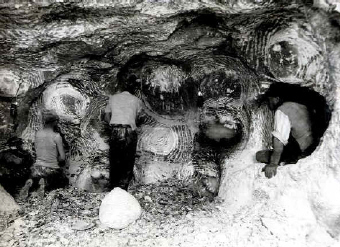L'Alabastro
Questo
prezioso materiale si è formato nel periodo Miocenico in seguito ad
importanti fenomeni geologici nella Valle del fiume Cecina.
La
cristallizzazione di alcune sostanze fra cui il cloruro di sodio e il
solfato di calcio ha dato origine all'Alabastro gessoso.
A
volte puramente candido, altre volte intessuto di venature di vario
colore, l'Alabastro ha un carattere adatto ad ogni tipo di lavorazione
artistica: tornitura, scultura, intarsio, traforo.
Le
varietà sono tantissime: pietre bianche trasparenti, come lo Scaglione,
in grado di diffondere la luce più del vetro e del cristallo; opache,
come le pietre a marmo o Alabastro Bardiglio; colorate come l'Agata, il
Cenerino e la Pietra Gialla.
Volterra
ha visto nascere l'amore per questa pietra all'epoca del popolo Etrusco
che se ne serviva per realizzare urne e sarcofagi.
Dalla
cultura etrusca, all'importanza dell'Alabastro nel Sette-Ottocento con
una continuità e una raffinatezza infinita fino alle recenti
realizzazioni nel vasto campo dell'arredamento moderno.

ALABASTER
The origins of this precious stone must be traced back to the Miocene
Age and it is the result of particular geological phenomena in the river
Cecina valley, such as sedimentation and concentration of natural
resources.
The crystallization process of some of them (sodium chloride and
calcium sulphate basically), instead, was at the origin of chaldy
alabaster.
Among the so many kinds of this stone, the best one is the
transparent white, called "Scaglione"and spreading its natural
light more than glass and crystal: this is the reason why it is often
used to make lamps. The one named "Bardiglio" is opaque and similar
to marble, while the naturally coloured kinds such as "Agata", "Cenerino"
and "Pietra Gialla" are very peculiar. Either snow white or veined
with several colours, alabaster can be shaped by means of turning,
carving, inlaying and drilling.
It was first worked during the Etruscan Age and, as it was recognized
as a precious stone, people used it to make funeral urns and
sarcophaguses. From that time on and, mainly from the 7th-8th
century up to now, alabaster has been considered a very fine material
and it has been recently used for a great many pieces of modern interior
design.
|